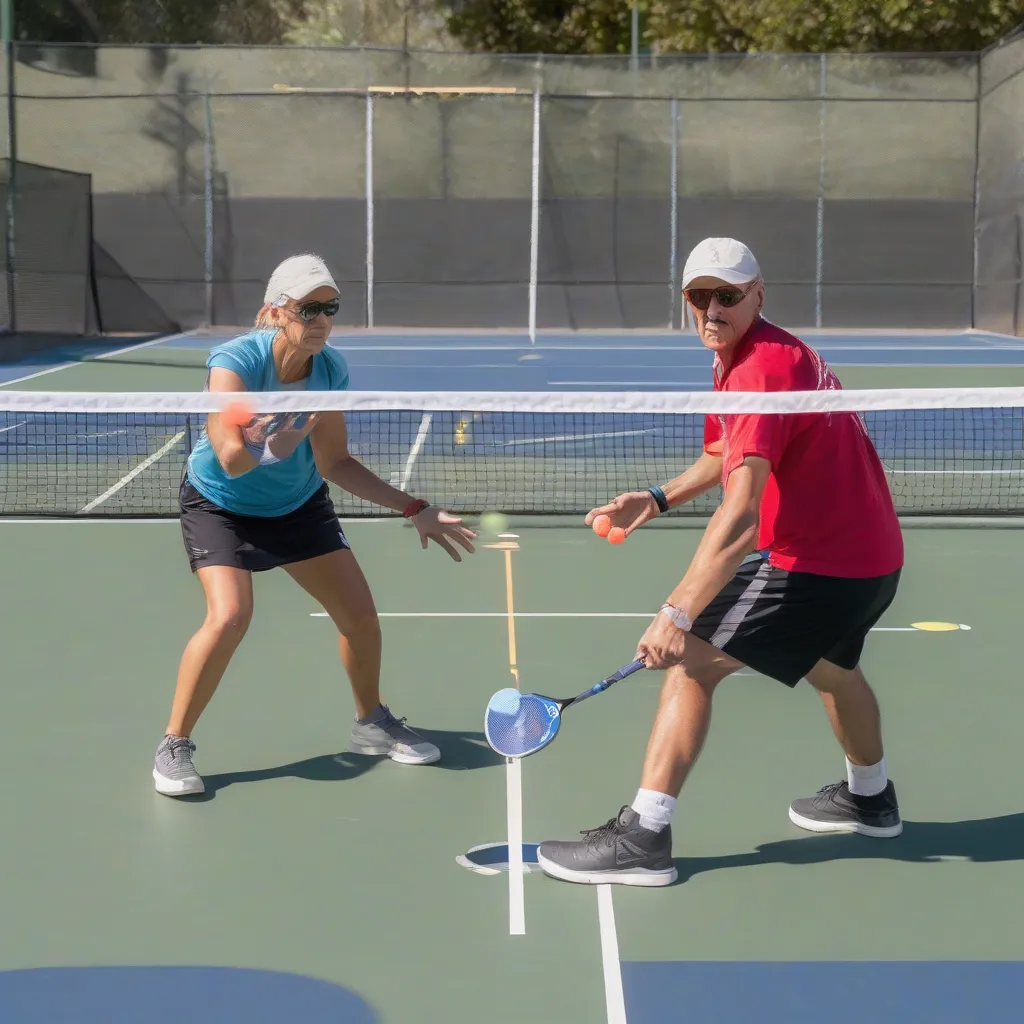Imagine this: You’re locked in a heated pickleball battle, the ball whizzing back and forth like a caffeinated bumblebee. Your opponents are smashing winners left and right, and you’re starting to feel like you’re playing defense more than offense. Don’t worry, you’re not alone! Mastering defensive pickleball is crucial for any player looking to level up their game. This article will delve into the best strategic practices for playing defensive pickleball, turning you from a reactive player into a strategic wall.
Understanding the Defensive Mindset
Defensive pickleball isn’t about simply getting the ball back. It’s about strategically absorbing pressure, creating opportunities, and setting yourself up for offensive success. It’s about patience, positioning, and anticipation. A key principle echoed by top players is to “reset the rally.” This means getting the ball deep and high, giving yourself time to recover and regroup.
Key Defensive Techniques
The Soft Game: Mastering Control
The foundation of great defense lies in controlling the ball. Soft shots, dinks, and controlled blocks are your best friends. These shots minimize power and keep the ball low, making it difficult for your opponents to attack. As Sarah Ansboury, a renowned pickleball coach, says, “Soft game is not about being passive, it’s about strategic placement and disrupting your opponent’s rhythm.”
Deep Returns: Resetting the Rally
When under pressure, aim deep. A high, deep return to the baseline forces your opponents back, neutralizes their attack, and allows you to recover to the non-volley zone (NVZ). This is a classic defensive tactic that disrupts the opponent’s offensive flow and buys you valuable time.
Positioning: The Art of Anticipation
In pickleball, positioning is everything. On defense, strive to maintain a central position in the court, slightly behind the NVZ line. This allows you to cover both sides and react quickly to your opponent’s shots. Anticipate their moves by watching their paddle position and body language.
Communication: The Doubles Dynamic
In doubles, clear and concise communication is paramount. Call out “mine” or “yours” to avoid collisions and ensure efficient court coverage. Coordinate your movements with your partner, creating a cohesive defensive unit.
Handling Specific Shots
Dealing with the Lob: Staying Calm Under Pressure
Lobs can be intimidating, but they can also be an opportunity. Practice your overhead smash and develop a consistent, controlled return. Don’t panic – assess the lob’s height and trajectory and react accordingly. Sometimes, letting the lob bounce before returning it strategically can be a wise move.
Neutralizing the Power Drive: Absorbing the Impact
Against powerful drives, focus on absorbing the ball’s energy. Use a soft block or a controlled reset shot to deflect the ball deep and high, taking the pace off the shot and regaining control of the rally.
Countering the Dink: Patience and Precision
When facing a persistent dinking game, resist the urge to attack prematurely. Wait for a high dink and then execute a controlled offensive shot. Patience and precision are key to winning the dinking battle.
Drills to Sharpen Your Defensive Skills
Practicing specific defensive drills can significantly improve your game. Dinking drills, lob-return drills, and defensive positioning drills are excellent ways to hone your skills and build muscle memory.
 Defensive Pickleball Positioning
Defensive Pickleball Positioning
Mental Toughness: The Defensive Advantage
Defensive pickleball requires mental fortitude. Staying calm under pressure, maintaining focus, and learning from mistakes are essential for defensive success. Remember, every point is an opportunity to learn and improve.
Adapting to Different Playing Styles
Just like any sport, pickleball involves adapting to different playing styles. Some opponents might rely on power, while others prefer finesse. Observe their strengths and weaknesses and adjust your defensive strategy accordingly.
- Bond, Payton (Author)
- English (Publication Language)
- Pickleball rules card – Say goodbye to confusion on the court with this easy-to-follow bi-fold rules reference. Side 1 and Side 2 feature official pickleball rules, including serving rules, scoring, the kitchen rule explained, and more. A great pickleball quick guide for players of all levels.
- For everyone who plays pickleball – Whether you're just learning or have played for years, this instructional pickleball training aid makes the rules easy to understand. It folds in the center for quick access and is great for gym class, coaching, or team practices.
- Arthur, S. M. (Author)
- English (Publication Language)
- Baker, Mr. Joe (Author)
- English (Publication Language)
- Publishing, Fitness Research (Author)
- English (Publication Language)
- Foster, Blake (Author)
- English (Publication Language)
- Hall, Dennis (Author)
- English (Publication Language)
- Dunmeyer, Phil (Author)
- English (Publication Language)
- Anderson, Brian (Author)
- English (Publication Language)
- Ritman, Alex (Author)
- English (Publication Language)
Conclusion
Mastering defensive pickleball is a journey, not a destination. By implementing these strategic practices, practicing diligently, and cultivating a resilient mindset, you can transform your defense from a liability into a powerful weapon. Remember, a strong defense is often the best offense. So, embrace the challenge, and watch your pickleball game soar to new heights! What are your favorite defensive strategies? Share your tips and experiences in the comments below!









